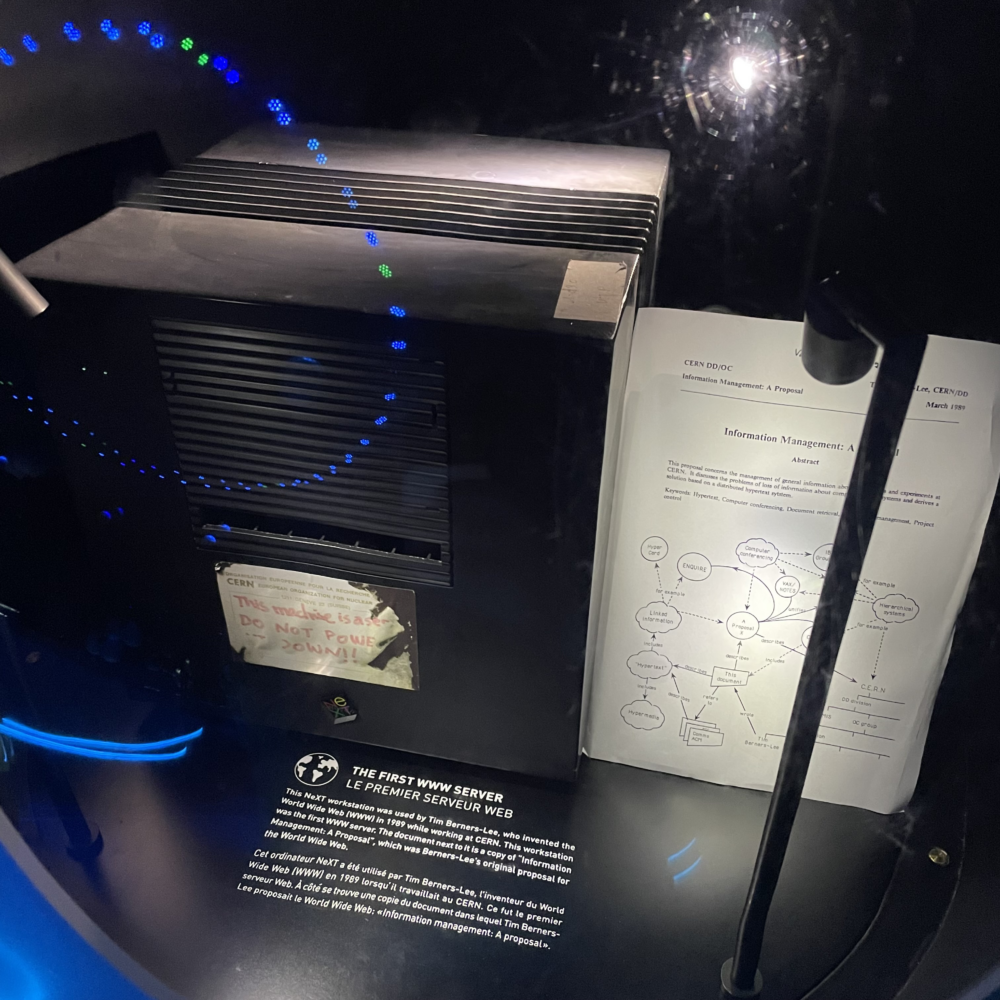The first web server

Yesterday, I had the entirely unexpected pleasure of seeing the world’s first web server at CERN in Meyrin, Switzerland.
Over the years, I’ve read a lot about the early development of the world wide web, and I’ve also read about the storied history of Apple, including Steve Jobs’s period at NeXT computers.
Yet somehow, it had spectacularly failed to lodge in my mind that the first web server was a NeXTCube. Before I peered into the display case, my assumption was that I’d see a beige tower, probably with an IBM badge on it. It’s strange to contemplate how assumptions like that take hold, even though I must have read many times over the years that it wasn’t the case.
I also loved the sticker for its real-world mundanity. Not shown in the picture above is the handwritten comment on the top of Berners-Lee’s paper describing his system: “vague but exciting…”
It’s also fascinating to ponder the problem he was trying to solve—managing information about complex, evolving systems—and how we really haven’t applied it in healthcare more than three decades on. Even at the very simplest level, we really haven’t embraced the idea of hypertext, and of live-updating bits of guidance as new evidence emerges—or even just as new policies emerge. Most healthcare guidance remains static, with whole documents being refreshed in cycles.
For example, even the boilerplate description of many organisations at the front of documents is baked in, and only refreshed when the document is updated. If only we had learned from Berners-Lee, that could be a ‘do-once’ update that would be linked into all relevant documents.
Or, more relevantly, look at COVID guidance: each time the isolation period changed, hundreds of pages of guidance documents, including even all of those hosted on gov.uk, needed manual revision. If they’d been more thoughtfully constructed, that too could have been a ‘do-once’ update.
The counter argument, of course, is that changing ‘bits’ can substantially change the meaning of the whole, and a standing document needs approval and sign-off at regular intervals. But really, nothing in medical guidance is more complex than particle physics, for goodness’ sake, and there’s no reason that approvals to updates couldn’t be sought with an eye to where they propogate.
Perhaps we’ll get there one day.
This post was filed under: Health, Post-a-day 2023, Technology, Travel, CERN, Meyrin, Switzerland, Tim Berners-Lee.